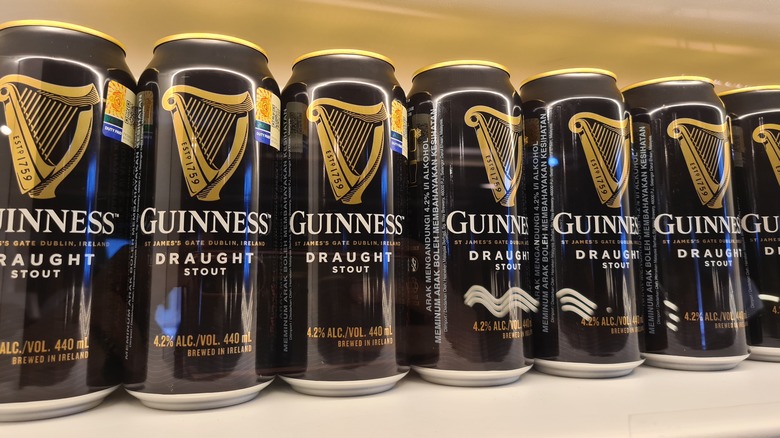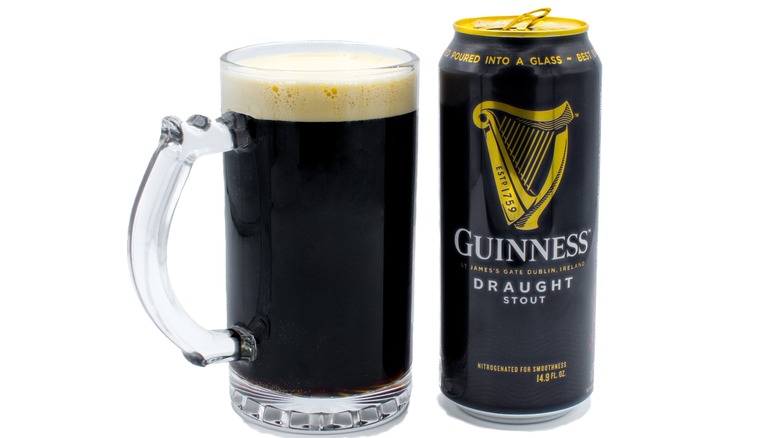What's That Little Ball Rattling Around Inside Guinness Cans?
It's hard to beat the experience of having a bartender pour you a draught glass full of Guinness fresh from the tap, but the stout beer is also sold in bottles and cans. If you've ever purchased cans of Guinness, you've heard the rattling sound that an empty one makes. You may have wondered what's making all that racket, or you may be one of those people who's given into curiosity and sliced the can open to find a small, white plastic ball.
That little ball, known as a widget, was invented by Guinness brewers Tony Carey and Sammy Hildebrand in 1968. When you pour a can of the Irish beer into a glass, the widget serves to mimic the appearance of Guinness served right from the tap, giving you cascading bubbles and a nice foamy head in the comfort of your own home. While the widget might look simple, it's an engineering accomplishment that has changed the world of canned beer.
How does the Guinness widget work?
Guinness made beer history by becoming the first brewer to use nitrogen in its products in 1959. The company continued its innovation streak with the development of the widget. Liquid nitrogen, a widget, and the beer itself are added to each can of Guinness before they're sealed. The liquid nitrogen then evaporates, and the amount of pressure inside the sealed can means there's nowhere for the gas to go except into the widget through a small hole in the ball's side.
When the can of Guinness is cracked open, all the pressure inside the can is released. The gas and beer trapped inside the widget then comes bursting out through the hole. The sudden surge of activity creates bubbles and foam, giving your canned Guinness the look of a freshly poured draft beer. The next time you pour a glass of canned Guinness at home, pay attention to the whooshing sounds you hear after popping the lid, knowing that it's the widget working hard to give you a crisp, delicious beverage.

